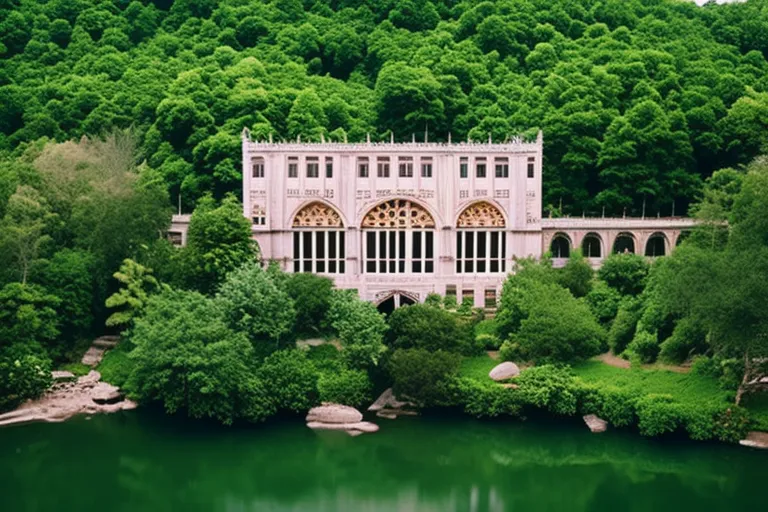If you're looking for a unique and relaxing experience in Tbilisi, look no further than the city's famous sulphur baths. These historic baths have been a part of Tbilisi culture for centuries, and they offer a chance to unwind in warm, mineral-rich waters while taking in the city's rich history.
The History of the Sulphur Baths in Tbilisi
The sulphur baths in Tbilisi have been a popular attraction for locals and tourists alike for centuries. According to legend, the baths were discovered by King Vakhtang I Gorgasali in the 5th century, who was hunting in the area when he stumbled upon the hot springs. The king was so impressed by the healing properties of the water that he decided to build a city around the springs, which became Tbilisi.
Over the years, the sulphur baths have been used for a variety of purposes, including healing, relaxation, and socializing. In the 19th century, the baths became a popular meeting place for artists, writers, and intellectuals, who would gather to discuss politics and culture while soaking in the warm waters.
The Experience of Visiting the Sulphur Baths
Visiting the sulphur baths in Tbilisi is a unique and immersive experience that combines relaxation with cultural exploration. The baths themselves are housed in historic buildings that date back to the 17th century, and the interiors are decorated with traditional Georgian mosaics and frescoes.
Upon arrival, visitors are given a private room where they can change into a swimsuit and store their belongings. The baths themselves are divided into separate sections for men and women, and each section contains several private rooms with individual pools.
The pools are filled with warm, mineral-rich water that is said to have healing properties for a variety of ailments, including arthritis, skin conditions, and respiratory issues. The water is also said to be good for relaxation and stress relief, making the sulphur baths a popular destination for locals and tourists alike.
Tips for Visiting the Sulphur Baths
If you're planning to visit the sulphur baths in Tbilisi, here are a few tips to help you make the most of your experience:
- Bring a swimsuit and a towel. The sulphur baths provide private rooms for changing, but you'll need to bring your own swimsuit and towel.
- Consider booking a massage. Many of the sulphur baths offer massage services, which can be a great way to enhance your relaxation experience.
- Be prepared for the heat. The water in the sulphur baths can be quite hot, so be sure to take breaks if you start to feel overheated.
- Be respectful of local customs. In the sulphur baths, it's customary to wear a bathing cap and to avoid using soap or shampoo in the pools.
Exploring the Surrounding Area
In addition to the sulphur baths themselves, the surrounding area of Tbilisi's Old Town is full of historic sites and cultural attractions. Some of the highlights include:
- The Narikala Fortress: This ancient fortress dates back to the 4th century and offers stunning views of the city.
- The Sioni Cathedral: This 6th-century cathedral is one of the oldest and most important religious sites in Tbilisi.
- The Bridge of Peace: This modern pedestrian bridge is a popular spot for taking photos and enjoying views of the city.
The Healing Properties of Sulphur Baths
The sulphur baths in Tbilisi are famous for their healing properties, which are said to be effective for a variety of ailments. The water in the baths is rich in minerals such as calcium, magnesium, and sulphur, which are believed to have therapeutic benefits.
Sulphur is particularly effective for treating skin conditions such as eczema, psoriasis, and acne. The mineral has anti-inflammatory properties that can help to reduce redness and irritation, while also promoting the production of collagen for healthier skin.
In addition to its benefits for the skin, sulphur is also believed to be effective for treating respiratory issues such as asthma and bronchitis. The mineral has a natural expectorant effect, which can help to clear the lungs and improve breathing.
The Cultural Significance of Sulphur Baths
Beyond their healing properties, the sulphur baths in Tbilisi also have significant cultural significance. The baths have been a gathering place for locals and tourists alike for centuries, and they remain an important part of Tbilisi culture today.
In the 19th century, the sulphur baths became a popular meeting place for artists, writers, and intellectuals, who would gather to discuss politics and culture while soaking in the warm waters. Today, the baths are still a popular destination for socializing and relaxation, and they offer a unique glimpse into Tbilisi's rich cultural heritage.
The Architecture of the Sulphur Baths
The sulphur baths in Tbilisi are housed in historic buildings that date back to the 17th century. The architecture of the baths is a blend of traditional Georgian and Persian styles, with ornate decorations and intricate tilework.
The interiors of the baths are equally impressive, with traditional Georgian mosaics and frescoes adorning the walls and ceilings. The baths offer a unique opportunity to experience the rich cultural heritage of Tbilisi while relaxing in warm, mineral-rich waters.
Conclusion
Visiting the sulphur baths in Tbilisi is a unique and immersive experience that combines relaxation with cultural exploration. Whether you're looking to unwind in warm, mineral-rich waters or to explore the city's rich history, the sulphur baths are a must-visit destination for anyone traveling to Tbilisi. So pack your swimsuit, bring a towel, and get ready to soak in the healing waters of Tbilisi's famous sulphur baths.
